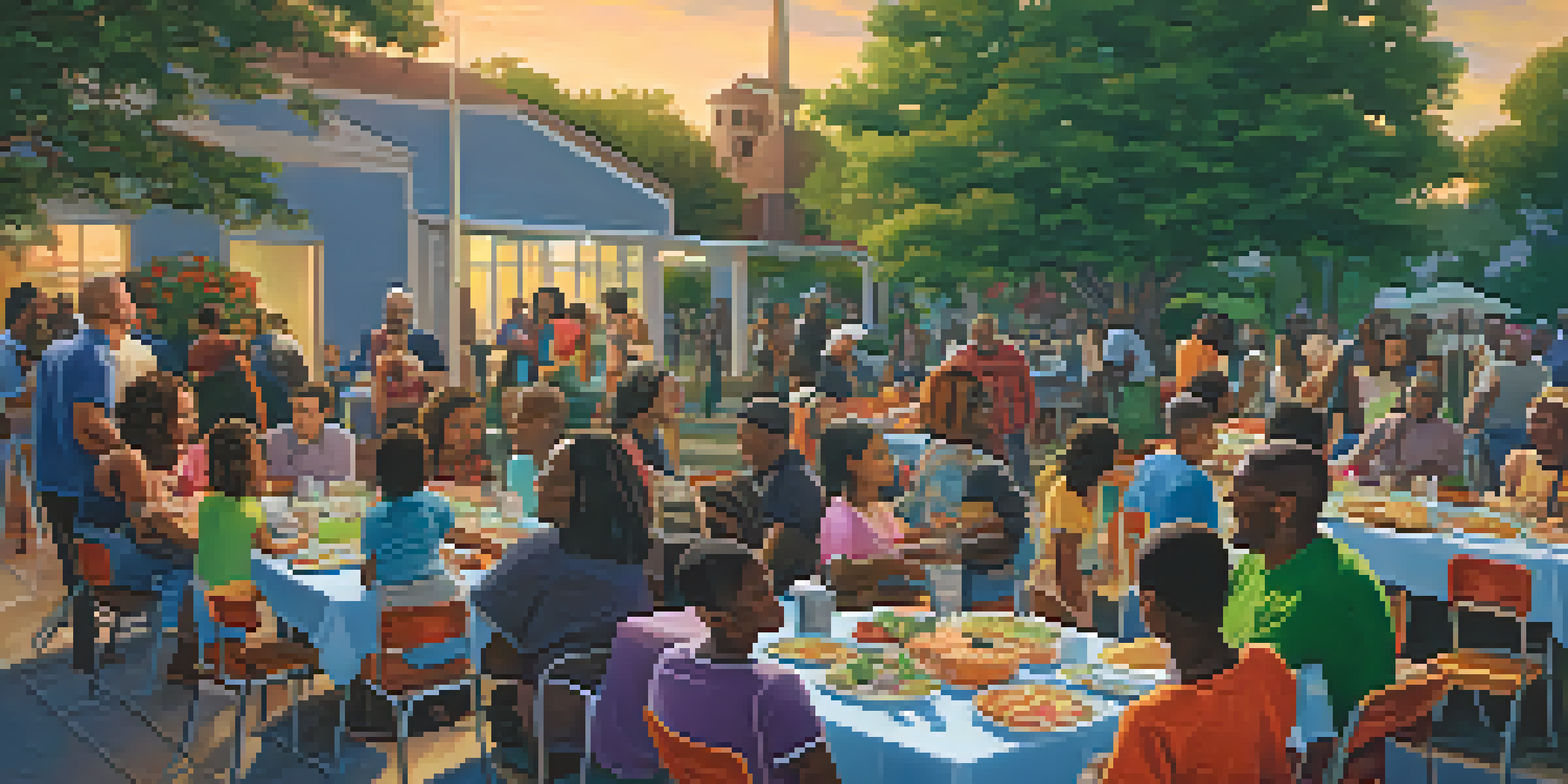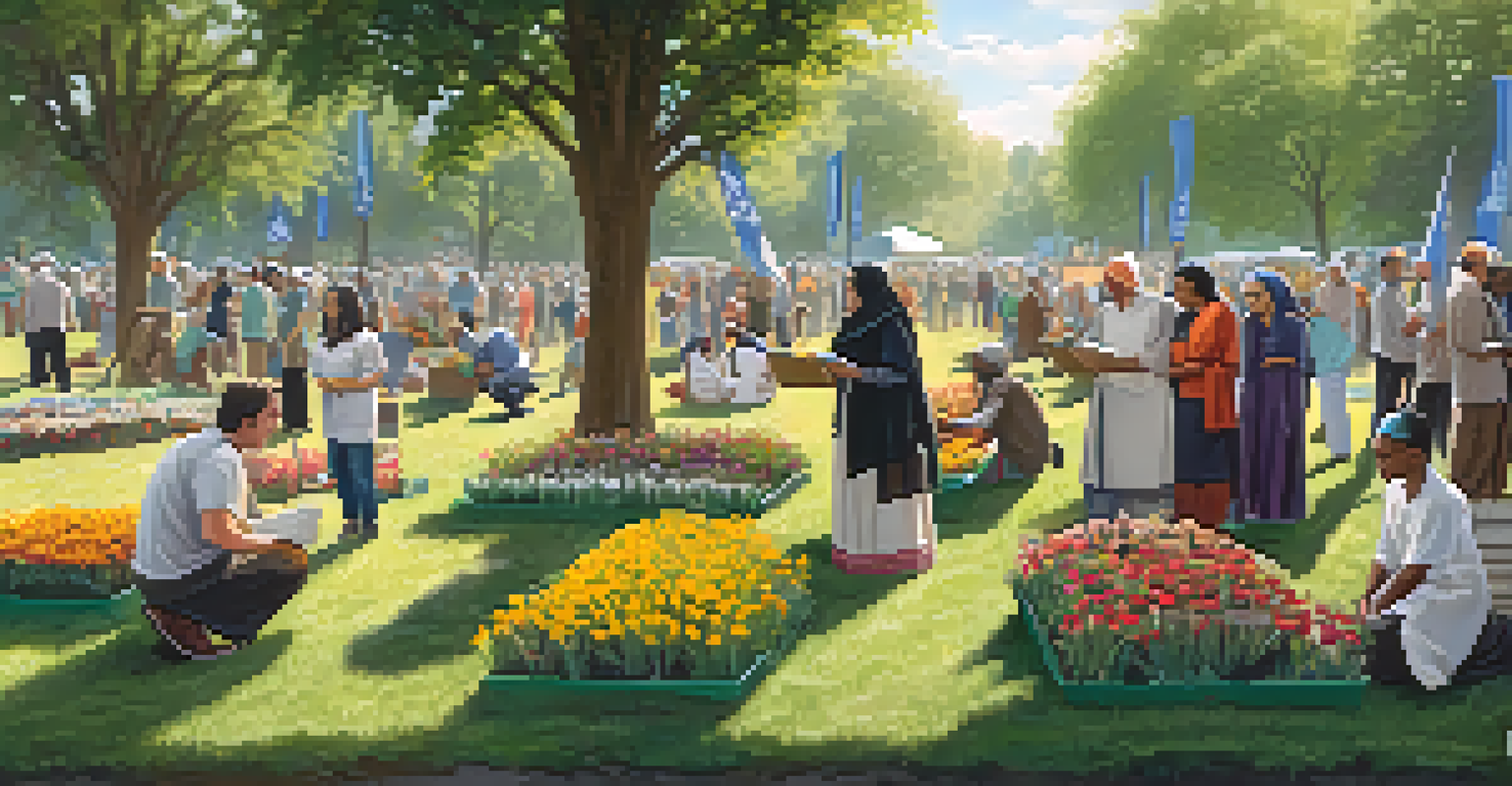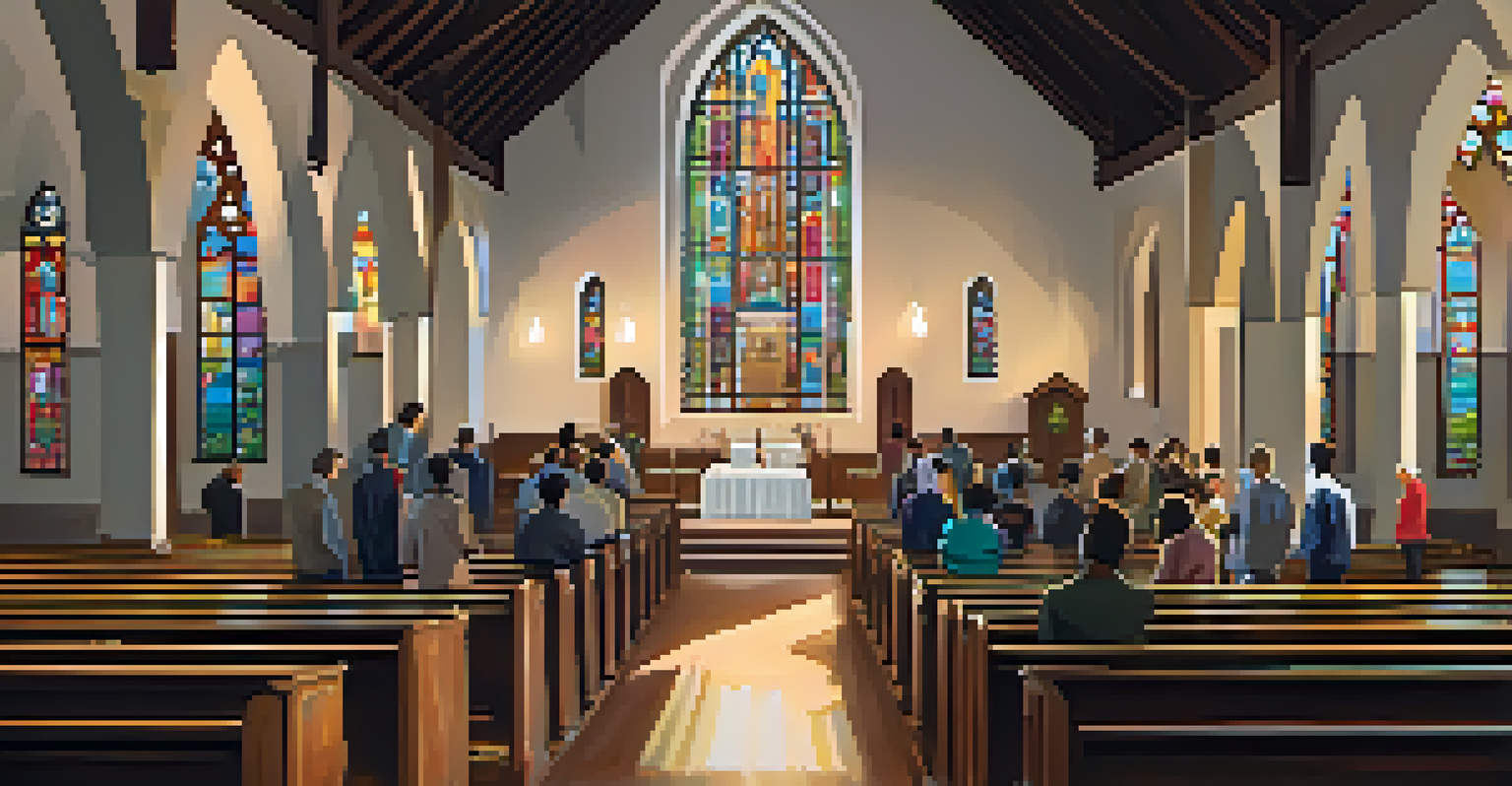Historical Significance of Religious Institutions in Compton

The Founding of Religious Institutions in Compton
Compton's religious landscape began to take shape in the early 20th century, with churches serving as the backbone of the community. These institutions not only provided spiritual guidance but also became centers for social and cultural engagement. For many residents, the church was a place to gather, share stories, and strengthen community ties.
Faith is taking the first step even when you don't see the whole staircase.
One of the first established churches, the First Baptist Church of Compton, played a pivotal role in this development. It became a sanctuary for families looking for solace and support during challenging times, especially during the Great Migration when African American populations increased in the area. This shift brought diverse religious practices and denominations that enriched the community's spiritual fabric.
As Compton grew, so did the number of religious institutions, each contributing uniquely to the community. They became vital in providing services like food banks and educational programs, thus addressing the immediate needs of residents. This establishment of religious groups laid the groundwork for a robust network of support that defined Compton’s identity.
Religious Institutions as Social Hubs
Beyond spiritual nourishment, religious institutions in Compton have historically served as vital social hubs. These spaces often hosted events that brought community members together, fostering unity and collaboration. From potlucks to youth programs, the church became a place where friendships blossomed and support systems formed.

For instance, the local churches organized activities that promoted cultural heritage and identity, particularly among younger generations. By incorporating music, art, and education into their programs, they not only engaged the youth but also instilled pride in their roots. Such initiatives were crucial in a community that faced social and economic challenges.
Churches as Community Pillars
Religious institutions in Compton have historically served as vital centers for social engagement, providing support and resources to residents.
These social gatherings extended beyond the church walls, creating a ripple effect in the community. They encouraged volunteerism and civic engagement, as many community leaders emerged from these religious institutions. This interconnectedness between faith and community service has shaped the very essence of Compton’s identity.
Religious Institutions and Civil Rights Movements
Religious institutions in Compton played a significant role during the Civil Rights Movement, serving as platforms for activism and advocacy. Many churches were not just places of worship but also meeting grounds for civil rights leaders and activists. They organized rallies, marches, and education initiatives aimed at fighting for social justice and equality.
Religion is not a burden, but a bridge to understanding and unity.
Prominent figures, such as Reverend James Lawson, often collaborated with local churches to galvanize support for the movement. These religious leaders used their influence to mobilize the community, encouraging participation in protests and voter registration drives. The church’s moral authority provided a strong foundation for the fight against racial discrimination.
The impact of these efforts is still felt today, as many of the social justice initiatives initiated by these institutions continue. The legacy of activism rooted in religious teachings has inspired generations to challenge injustices. Thus, religious institutions have not only contributed to Compton’s history but have also shaped its ongoing struggle for equality.
The Role of Faith in Community Resilience
Faith has been a cornerstone of resilience for many residents in Compton, particularly in times of adversity. The teachings and support offered by religious institutions have provided hope and guidance during difficult times, such as economic downturns or social unrest. Many individuals turn to their faith communities for emotional and spiritual support when faced with life's challenges.
For example, during the 1992 Los Angeles riots, local churches became sanctuaries for those seeking refuge from the chaos. They provided not only physical shelter but also a space for healing and reconciliation. This role as a safe haven has solidified the importance of faith-based organizations in the community's social fabric.
Faith's Role in Resilience
During times of adversity, faith communities have provided emotional and spiritual support, helping residents navigate challenges like economic downturns and social unrest.
Moreover, religious leaders often take on the role of mediators in community disputes, using their influence to foster dialogue and understanding. This commitment to peace and unity showcases how faith can motivate individuals to work towards collective healing. As a result, these institutions have become essential to Compton's resilience and recovery.
Interfaith Collaboration and Community Unity
In recent years, interfaith collaboration has emerged as a significant trend among Compton's religious institutions. Different faith communities have come together to address shared concerns, such as poverty, education, and public safety. This unity has fostered a sense of belonging and solidarity among residents, regardless of their religious backgrounds.
For instance, interfaith events, such as community service projects and cultural festivals, allow diverse groups to come together and celebrate their differences. These initiatives not only strengthen ties between various religious groups but also enhance understanding and respect for one another’s beliefs. Such collaborations demonstrate that faith can transcend differences and work towards common goals.
The positive outcomes of these interfaith efforts are evident in the community's response to challenges. By pooling resources and ideas, religious institutions can tackle pressing issues more effectively. This collaborative spirit exemplifies how faith can serve as a unifying force in a diverse community like Compton.
Challenges Faced by Religious Institutions
Despite their historical significance, religious institutions in Compton have faced numerous challenges over the years. One of the most pressing issues has been declining membership, as younger generations seek alternative forms of community and connection. This trend has raised concerns about the future viability of many local churches and their ability to serve the community.
Additionally, societal changes and economic pressures have strained the resources of these institutions. Many churches struggle to maintain their facilities or provide essential services due to limited funding and donations. This financial instability has made it increasingly difficult for them to fulfill their missions effectively.
Interfaith Collaboration Grows
Different faith communities in Compton are increasingly coming together to address shared challenges, fostering unity and understanding across diverse backgrounds.
However, many religious leaders are adapting to these challenges by embracing new technologies and outreach strategies. By engaging with the community through social media and online platforms, they are reaching younger audiences in ways that resonate with them. This willingness to evolve demonstrates the resilience and commitment of Compton's religious institutions to continue their vital role in the community.
The Future of Religious Institutions in Compton
Looking ahead, the future of religious institutions in Compton will likely hinge on their ability to adapt to changing community needs. As demographics shift and social dynamics evolve, these organizations must find innovative ways to remain relevant. This may involve expanding their outreach programs and incorporating contemporary issues into their mission.
Moreover, fostering collaboration between different faith communities could play a crucial role in their sustainability. By sharing resources and knowledge, religious institutions can enhance their impact on the community. This collaborative approach not only strengthens their missions but also reinforces the idea of unity among diverse faiths.

Ultimately, the continued significance of religious institutions in Compton relies on their commitment to serve and uplift the community. By embracing change while holding onto their core values, these institutions can ensure they remain vital parts of Compton's social fabric for generations to come.